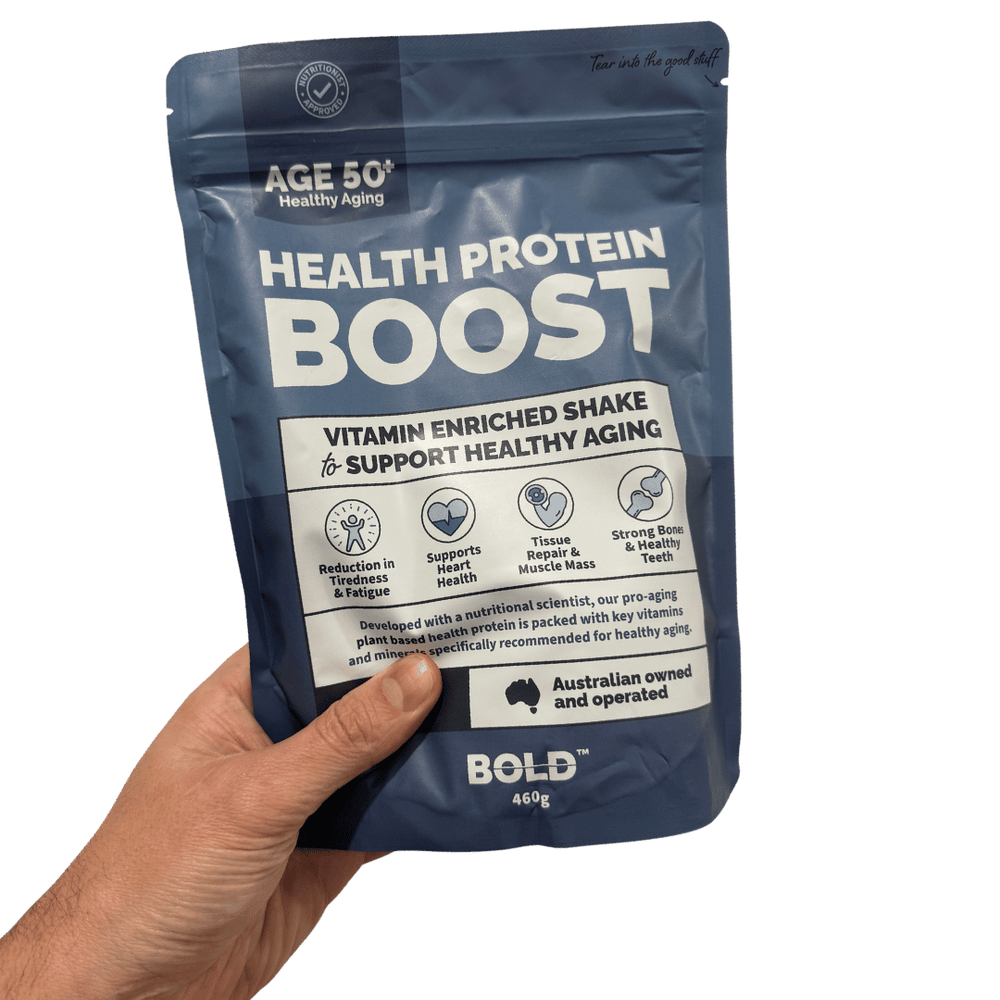How fibre and prebiotics can help your digestion
How to keep your digestive system running smoothly

Topics covered:
- What is digestion and how does it work for the body?
- Overview of the gut microbiome
- Fibre and its impact on the gut
- What are prebiotics & how do they work?
- Summary
We all know that the process of digestion begins in your mouth and ends with a bowel movement. However, there are many other factors that can affect how well your digestive tract is working which you may not be aware of. Many of these processes are influenced by the health of your gut microbiome as well as your intake of fibre and prebiotics. In this article, we discuss how you can keep your digestive system running smoothly by implementing a few simple changes.
What is digestion and how does it work for the body?
The process of digestion starts in the mouth, makes its way down the oesophagus (food pipe), into the stomach, through the bowel (the small and large intestine) and out the backdoor (your rectum and anus). But there's so much more involved along the way.
The process of digestion involves the breakdown of food both mechanically and chemically. The mechanical process involves the food being broken down into more manageable chunks via chewing and then via churning in the stomach where it is turned into a paste. The chemical process involves digestive enzymes and this helps dissolve food into even smaller molecules which can then be absorbed by the body through the gut wall.
In order for all this to occur our gut microbiome and gut wall needs to be in optimal condition.
Overview of the gut microbiome
Our gut is made up of trillions of microbiota. This microbiota is primarily made up of bacteria (approximately 90%) but also contains some fungi and archaea. Together this combination weighs approximately 1-2kgs!
These microbes play an important role in the way your body breaks down food as well as removing toxins from the body, and overall help maintain our physical and mental health.
So let’s take a closer look at how prebiotics, fibre and lactose-free foods impact our digestion and gut health.
Fibre and its impact on the gut
Fibre is essential for good gut health. It’s important for keeping your bowels regular, your stools soft and for nourishing your gut microbiome. It also helps with digestion by keeping your bowels strong and healthy to allow for effective churning of your food.
Fibre is a group of carbohydrates that you can eat but the body can’t digest. It can be broken down into a few different groups. Firstly, there is soluble fibre and insoluble fibre.
Insoluble fibre is fibre that won’t dissolve in water so its main role is to add bulk to your stools and help prevent constipation. Types of insoluble fibre include wholegrain foods, nuts, seeds and skins of fruit and vegetables.
Soluble fibre on the other hand is fibre that is dissolvable in water and turns into a gel. This type of fibre also helps maintain healthy bowel habits and can help keep your stools soft. Types of soluble fibre include fruit, vegetables, flaxseed, lentils and beans.
Within this group of soluble fibre there is also fermentable fibre also known as prebiotic fibre. Prebiotic fibre is fibre that your gut microbiome is able to break down and digest.
What are prebiotics & how do they work?
Prebiotics are specific plant fibres that stimulate and nourish beneficial bacteria in the gut.
It’s important not to confuse prebiotics with probiotics. These are often mistaken for the same thing but they are actually very different. Probiotics are the actual strains of good bacteria and fungi whereas Prebiotics are the food that feeds them.
Prebiotics are the primary food source that fuels our microbiome. When you eat a prebiotic food, it will move through the stomach and down into your lower intestine where it will sit until it's broken down by your microbiome.
The by-product of this is that your microbiome will then produce beneficial short-chain fatty acids. It’s these SCFAs that help build and nourish your gut wall lining. It is well documented that a good gut lining leads to better digestion and better absorption of nutrients, minerals and vitamins from your food.
Foods containing high amounts of inulin, fructooligosaccharides and galactooligosaccharides are considered good sources of prebiotics. Foods naturally high in prebiotics include:
- Vegetables such as chicory root, Jerusalem artichoke, onions, leeks, and garlic.
- Fruits such as nectarines, white peaches, and watermelon
- Wheat, barley, oats
- Cashews and pistachio nuts
Summary
Digestion is a complex process but a healthy digestive system is an important part of a healthy lifestyle. Fibre and prebiotics play an important role in digestion because it helps to keep everything moving through your intestines at a steady pace and keep your little gut bugs in an optimal state.

References
- https://www.healthline.com/health/chemical-digestion#chemical-vs.-mechanical
- https://www.healthline.com/health/chemical-digestion#chemical-vs.-mechanical
- https://www.science.org.au/curious/people-medicine/gut-bacteria
- https://www.ncbi.nlm.nih.gov/pmc/articles/PMC3705355/
- https://www.betterhealth.vic.gov.au/health/healthyliving/fibre-in-food#types-of-fibre-in-food
- https://www.betterhealth.vic.gov.au/health/healthyliving/fibre-in-food#types-of-fibre-in-food
- https://www.monash.edu/medicine/ccs/gastroenterology/prebiotic/faq#1
- https://www.webmd.com/digestive-disorders/prebiotics-overview
- https://www.ncbi.nlm.nih.gov/pmc/articles/PMC3735932/
- https://www.monash.edu/medicine/ccs/gastroenterology/prebiotic/faq#3
----------------------------------------------------------------------------------------------------------
Medical Disclaimer
The information provided in this blog post is for general information only, it is not intended as medical advice. For medical advice please consult with a qualified medical professional who is familiar with your individual medical needs.


